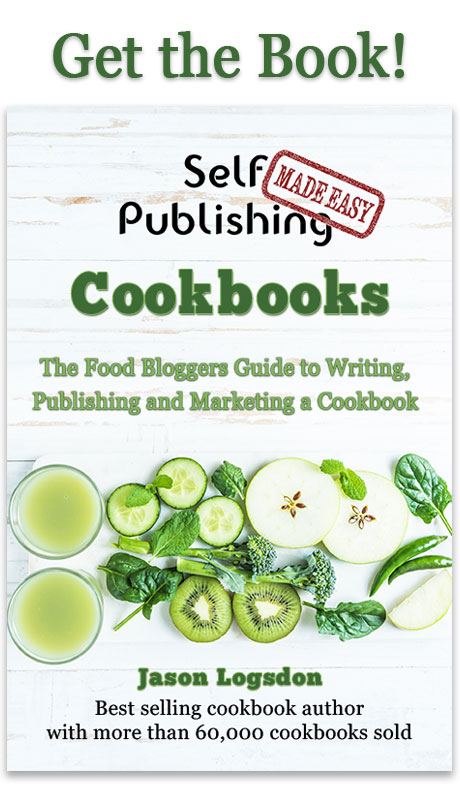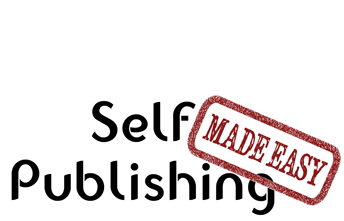Existing Users Sign In

Publishing Master Course Outline
- Self Publishing Master Course Introduction
- Before You Get Started
- Overview of the Publishing Process
- Determining Your Cookbook Goals
- Determine Type of Cookbook
- Consider a Sample Book
- Determine Book Subject
- What Makes a Good Cookbook Subject
- Brainstorming Cookbook Subjects
- Determine the Competition In a Cookbook Subject
- Finding Complementary and Competitive Products
- How to Generate a List of Keyword for Your Cookbook Subject
- Competitive Breakdown of an Amazon Sales Category
- Finally Choosing Your Cookbook Subject
- Research Cookbook Subject
- Choosing Your Avatars
- Researching the Cookbook Subject
- Researching Material for Your Cookbook
- Outlining and Notetaking Tools
- Write Cookbook and Recipes
- Keys to a Well Written Book
- Components to a Recipe
- Recipe Layouts
- Recipe Attribution
- Book Writing Tools
- How to Back Up Your Cookbook Files
- Photograph and Test Recipes
- How to Test Cookbook Recipes
- Food Photography Tips
- Proofread and Edit Cookbook
- Types of Cookbook Editing
- Tips for Self Editing Your Cookbook
- Finding Outside Editing Help
- Proofreading and Editing Resources
- Publishing Formats
- Types of Cookbook Publishing Formats
- Choosing a Self Publishing Printer
- Comparison of Print on Demand Cookbook Printers
- CreateSpace Cookbook Publishing Review
- IngramSpark Cookbook Publishing Review
- Ebook Publishers and Distributors
- Design Cookbook
- Cookbook Design and Formatting Guidelines
- Choosing A Great Cookbook Title
- How to Design a Cookbook Cover
- What Fonts to Use in Your Cookbook
- Cookbook Front Matter
- Cookbook Back Matter
- In-Book Marketing
- How to Design an eBook
- How to Create an ePub File
- Previewing and Testing eBooks
- Finding Outside Design Help
- Publish Cookbook
- How to Price Your Cookbook
- How to Write a Selling Book Description
- Determining Your Amazon Categories
- Choosing Publishing Keywords
- How to Publish on Amazon With CreateSpace
- How to Publish an eBook
- How to Publish On the Kindle
- How to Publish on the Nook
- How to Publish on iTunes
- How to Publish Your Book Through Smashwords
- How to Create and Sell a PDF on Your Blog
- Wholesaling Cookbook
- Methods of Cookbook Wholesaling
- Where to Wholesale Your Cookbook
- Developing a Wholesaling Line Sheet
- Promote Cookbook
- How to Launch Your Cookbook Successfully
- Getting Amazon Reviews
- Newsletter Promotions
- Free Content and Previews on Your Blog
- How to Get Blogs to Write About Your Cookbook
- General Articles
- All About ISBN Numbers
- How Do Cookbook Royalties Work?
- Financing Your Self Published Cookbook
- What is the Amazon Sales Rank?
- Cookbook Writing Resources
- Understanding Book Margins
- PDF Self Publishing FAQs
- How to Poll Your Blog Readers
- What is DRM
- Great Books to Learn About Food and Recipe Writing
- KDP Select - What Is It and Is It Worth it?
- Cookbook Design Programs
- Amazon Top Cookbook Reviewers
- Should You Publish Your ebook Directly or Use a Distributor
- Case Studies
- Sales Channel Revenue Breakdown with Modernist Cooking Made Easy
- Cookbook Writing and Marketing Templates
- Recipe Testing Worksheet Templates
- Review Requests Templates
- Cookbook Newsletter Promotion Templates
- Cookbook Manuscript Templates
Existing users please sign in to continue reading this article.
Welcome to Self Publishing Made Easy!
Publishing a Cookbook can be
Challenging
We will make the process clear and easy, allowing you to focus on creating a remarkable cookbook without any distractions.
Easily Navigate The Publishing Process
Benefit From a Community of Other Self Publishers
Maximize Your Distribution and Profit
We are the leading cookbook self publishing member site on the internet and are here to help you navigate the sometimes tricky path of self publishing. We provide step by step guidance to publishing your own cookbook as well as access to our active and helpful community of self publishers.
Or Get More Information about Self Publishing Made Easy
What Fonts to Use in Your Cookbook
Click here to get great self publishing content via emailOne of the more important parts of your cookbook design is choosing which fonts to use. Poor font selection can result in a book that is hard to read and can frustrate your readers. Sticking to basic fonts will not make your book stand out, but you can ensure it will be as readable as possible. Print and eBooks will have different fonts because some fonts are easier to read on a computer and others are easier to read in print.
Standard Fonts for Printed Cookbooks
There are several standard fonts used for printed cookbooks. The major ones are Georgia, Adobe Garamond Pro, Minion Pro, Palatino, Baskerville, and Goudy Old Style. These are all serif fonts, which tend to be easier to read in printed books.
The font size can vary depending on the context (recipe headnote vs body text vs ingredients) though 10 to 14 is usually used.
For headings, a larger or bolder version of the body font can be used or a more stylized font such as Bookman Old Style or Century Schoolbook.
When selecting the fonts you will use for your print cookbook, be sure to actually print some sample pages out. The fonts will look very different on your screen than they do on the printed page. It's almost impossible to accurately judge the look, feel, and size of fonts without printing them.
Here are the fonts I use for my most recent books.
- Main Body and Regular Text: Goudy Old Style
- Header 1: Georgia with bottom border
- Header 2: Bookman Old Style Bold
- Ingredient Header: Goudy Old Style Italic
Standard Fonts for eBooks
For Kindle and other ebooks, the generally accepted method is to set a body font that the user can then override with their device settings. The Kindle supports many basic fonts including: Arial, Baskerville, Caecilia, Courier, Georgia, Helvetica, Lucida Sans Unicode, Palatino, Times New Roman, Trebuchet, Verdana, so it is usually best to stick to one of those as your default. You can then utilize the bold, italic, and underlined versions of this font throughout your book. A separate font can also be used for headers if desired.
We have published our books using Palatino, Verdana, and Georgia as our base font for different books. We then use the bold version of the font at double the size for our largest header and move the size down from there.
For fancier presentations you can also embed fonts into your Kindle books. It's usually best to only do this for headers because many readers like to pick their own body fonts. Preventing them from doing this will just upset them and lead to bad reviews.
For this reason it is also best not to lock the font size of the body text, different people like reading it at different sizes. 12pt is generally a good default font size that the reader can then overwrite if needed.
Be sure to add in some line spacing, usually 120% to 150% works best.
For PDF books I highly recommend using a sans serif font or one that is designed to be read on a computer screen. This will make it much easier for your readers to read it.
General Cookbook Font Tips
A good rule of thumb is to mix and match serif and sans serif fonts if your header font is different than your body font. Two different serif fonts next to each other can look a little strange. Some work well with each other but it's something to keep in mind.
An important reminder is that when most people are reading your recipes they will be in their kitchen and not in a normal reading situation. Because of this, it is best to err on the side of too large instead of too small. This is especially important with print books or PDFs where you have fixed the font size.
Make sure you leave ample spacing between paragraphs. Usually a 0.8 to 2 extra lines are added.
Some people recommend always setting your text to full-justification for a more professional looking text.
You can view the fonts and styles we use in our books by downloading our sample template.


